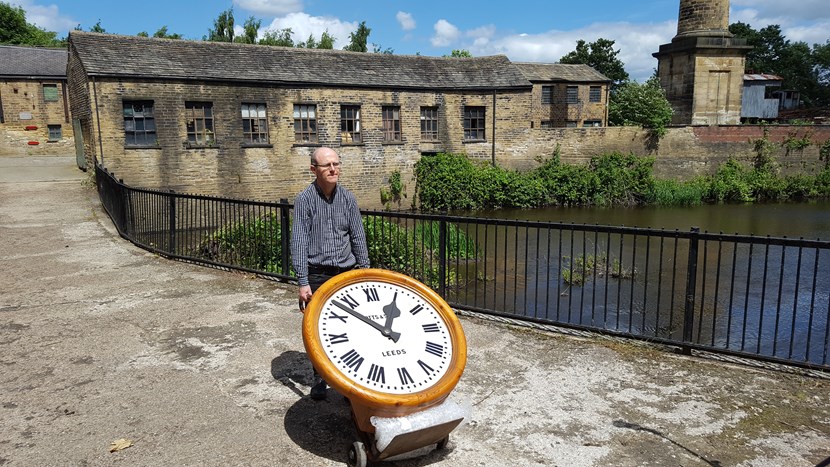
16 Jun 2017
Time for a new chapter in the striking story of historic seaside clock
For generations it faithfully ticked away the minutes and hours as thousands of Yorkshire folk enjoyed a quintessential British summertime getaway.
Now Morecambe Promenade railway station’s impressive Victorian clock has finally returned home to Leeds after more than a century at the seaside.
The clock arrived at Leeds Industrial Museum this week having been purchased at auction from a private collector who had owned it since the 1970s. It will now go on display as part of the museum’s huge collection honouring the city’s industrial heritage.
Made by famous Leeds clockmakers Potts and Sons, the large, solid pine timepiece is around two-an-a-half feet wide and was installed in the circulating area at Morecambe Promenade station when it was rebuilt and reopened in 1907.
The station had been designed to cope with a huge influx of passengers travelling to Morecambe and other traditional costal tourist hotspots nearby and was built close to the old Midland hotel so holidaymakers, many of them from Yorkshire, could go straight there to stay.
Morecambe even became affectionately known as ‘Bradford on Sea’ because so many people travelled there from the other side of the Pennines.
In search of a suitably imposing and reliable clock, the station’s designers turned to renowned clockmakers Potts and Sons, a family business that had been established in Pudsey in 1833 by William Potts.
The company had continued to grow, supplying clocks for many public buildings across Yorkshire and beyond, with a total of 1,568 installed at locations including at Leeds Town Hall and Leeds Corn Exchange.
John McGoldrick, Leeds Museums and Galleries’ curator of industrial history, said: “From humble beginnings, Potts and Sons became something of a standard bearer for clocks on public buildings, with their timepieces adorning cathedrals, churches, town halls, schools, engineering works and railways both at home and abroad.
“Tens of thousands of people from different eras must have looked at this particular clock while they enjoyed a traditional break and it’s wonderful to think that such a proud piece of our city’s local history played a part in the fun they had by the seaside.”
Potts clocks were not only installed in England, with examples also found at Lerwick Town Hall in the Shetland Islands, the Roman Catholic Church Hall in Melbourne, Australia and the post office in Port Lyttleton, New Zealand.
Councillor Brian Selby, Leeds City Council’s lead member for museums and galleries, said: “It’s fabulous news that this clock is returning home to Leeds after all those years at the heart of such a popular seaside destination.
“It’s important that we preserve items which reflect our city’s proud industrial history, particularly when they have such a colourful story behind them for future generations to learn about and enjoy.”
For more information about Leeds Industrial Museum, please visit: http://www.leeds.gov.uk/museumsandgalleries/Pages/armleymills.aspx
ENDS
For media enquiries, please contact:
Stuart Robinson
Communications Officer
Leeds City Council
Tel: 0113 378 9182 (please note my new number)
Email: stuart.robinson@leeds.gov.uk
www.leeds.gov.uk
For media enquiries contact:
Leeds City Council Communications team
communicationsteam@leeds.gov.uk